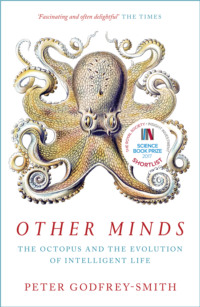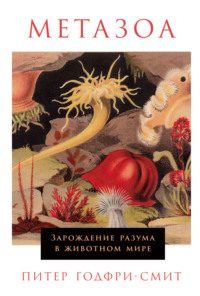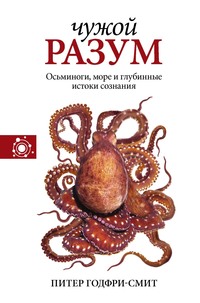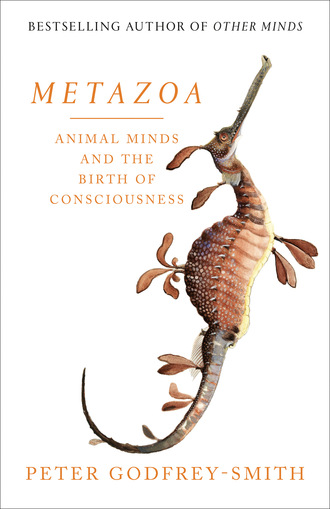
Полная версия
Metazoa
These years also saw a sharpening of the problem of mental and physical. “The mind” as puzzle was replaced by a more specific conundrum. The new view holds that some of the mind can be fairly readily explained in materialist terms, while another aspect is more resistant. The resistant side is subjective experience, or consciousness. Consider memory, for example. We might find that various kinds of animals have memory; they create traces of the past in their brains, and use those traces later, when working out what to do. It is not too hard to imagine how brains might achieve this. Much of that problem is unsolved, but it certainly looks soluble; we should be able to work out how this side of memory works. But in humans, at least, some kinds of memory also feel like something. As Thomas Nagel put it in 1974, there is something it’s like—something it feels like—to have a mind. There is something it feels like to remember a good experience, or a bad one. The “information-processing” side of memory, the ability to store and retrieve useful information, might either be accompanied by this additional feature or not. The hard part of the mind-body problem is explaining that last side of our mental lives, explaining in biological, physical, or computer-based terms how felt experience can exist in the world.
This problem is often still approached through a range of classic options. The main divide has materialist (or “physicalist”) views on one side, and dualism on the other. More radical possibilities are also entertained. Panpsychism holds that all matter, including the matter in objects like tables, has a mental aspect to it. This is not the idea that the entire universe is made of experience—that is idealism. Instead, a panpsychist accepts the physical layout of the world as it appears, but adds that the material that makes up that world always has a side to it that is faintly mind-like. This mind-like side of matter gives rise to experience and consciousness, once some of that matter is organized into brains. Despite its apparent extravagance, panpsychism has serious defenders. Thomas Nagel, who I mentioned above, argues that panpsychism should be kept on the table as an option, because every view has significant problems and panpsychism’s problems are no worse than others’. Ernst Haeckel, in the post-bathybius years, was also attracted to panpsychism. Huxley was attracted to another unorthodox view. He suspected that conscious experience might be an effect of material processes, but never a cause of them. This is an unusual kind of dualism, and it also has defenders today.
Something that is vivid in the wild sweep of these alternative views of the universe, and visible also in more mundane discussions, is a huge diversity in ideas about where minds are to be found. For some, mind is everywhere, or nearly everywhere. For others, it is confined to humans and perhaps a few animals similar to us. One person will look at a paramecium, a single-celled organism, swimming vigorously through a film of water and say: What is going on in that creature is enough for it to have feelings. The paramecium is responsive, and has goals. On a tiny scale, it has experience. Another person will not merely dismiss the paramecium, but will look at a complex animal, like a fish, and say: There is probably no feeling there at all. The fish has a lot of reflexes and instincts, and some fairly complicated brain activity, but all of this activity is going on “in the dark.” If this second person is wrong, why are they wrong? If panpsychism is also wrong and there is no hint of feeling in a grain of sand, why is that wrong? Might things be that way? There often seems to be a kind of arbitrariness in the situation. People can say whatever they like. If I were to guess where most people stand at the moment, when asked which living things around them have experiences, I would conjecture that a common answer is “yes”for mammals and birds, “perhaps” for fish and reptiles, and “no” for everything else. But if someone insists on pushing further out (to ants, plants, and paramecia) or pulling further in (mammals only), the discussion rapidly gets a bit untethered. How could we possibly work out who is right?
This sense of arbitrariness is related to something the philosopher Joseph Levine has called “the explanatory gap.” Even if we come to be pretty sure that the mind must have a purely physical basis, with nothing added, we would also want to know why this physical setup gives rise to this kind of experience, rather than something else. Why does it feel like this to have a brain of the particular kind you have, going through the processes it is going through right now? Even if the difficulties faced by other views convince us that materialism has to be true, it’s hard to see how it’s true, how things could be this way.
That is the cluster of problems I want to address in this book. The aim is not to answer Levine’s questions about particular experiences—which activities of the brain are involved in seeing color or feeling pain. That is a task for neuroscience. The aim, instead, is to make sense of why it feels like something to be a material being of the kind that we are. That “we” is intended to be rather broad; my main target is not the intricacies of human consciousness, but experience in general, something that might extend to many other animals. I want to address these questions about experience in a way that reduces the sense of arbitrariness I described above—the feeling that you could say yes to bacteria, no to birds, whatever strikes you.
The approach I take to the mind-body problem is biological, and one that fits into a materialist picture of the world. The word “materialism” to many suggests a hard-headed, tough-minded view: the world is smaller than you thought, less special or less sacred, just atoms bumping into each other. Atoms bumping into each other are indeed quite important, but I do not want to get the story moving with a mood of toughness and restriction in the air. The “physical” or “material” world is more than a world of thudding collisions or dry structure. It is a world of energy and fields and hidden influences. We should be ready for ongoing surprises about what it contains.
The approach taken in this book is a biological materialism, but in many ways the heart of my outlook is a broader position, sometimes called monism. Monism is a commitment to an underlying unity in nature, a unity at the most basic levels. Materialism is one kind of monism, as it is committed to the idea that mental phenomena, including subjective experience, are manifestations of more basic activities described in biology, chemistry, and physics. Idealism, the idea that everything is mental, is another kind of monism—it is a different assertion of unity. (An idealist must explain how what seem to be physical objects and goings-on are really manifestations of mind or spirit.) Yet another way of being a monist is to think that both what we call the “physical” and what we call the “mental” are manifestations of something else that is basic; this view is called neutral monism. Rather than explaining the mental in physical terms or explaining the physical in mental terms, we explain both the physical and mental in terms of something else. That “something else” tends to remain rather mysterious. If I was not a materialist I’d be a neutral monist, but that is an outside possibility for me. The way I will proceed is by starting with life—understood in a materialist way—and trying to show how the evolutionary development of living systems can give rise to minds. I want to close—partially, at least—the explanatory gap between mental and physical.
Before we proceed, however, let’s take a closer look at the mental side of the puzzle, and the words we use to describe it. The side of the mind that Nagel tried to point to by saying “there is something it’s like …” is now often called consciousness. (Nagel himself calls it that.) You are conscious, in this sense, if there is something it feels like to be you. But the term “consciousness” is often misleading here, as it tends to suggest something quite sophisticated. That phrase “something it’s like …” is supposed to include the presence of feelings of any kind. There is something it feels like to be you—or a fish, or a moth—if the vaguest, dimmest washes of sensation are part of your life. The fact that the word “consciousness” suggests more than this tends to cause trouble.
For example, neuroscientists often say that consciousness depends on the cerebral cortex, the folded part at the top of our brains, something found only in mammals and some other vertebrates. Here is a quote from the physician and essayist Oliver Sacks, talking about a patient who had, as a result of a brain infection, lost all ability to hold new events in memory. Sacks asked: “What is the relationship of action patterns and procedural memories, which are associated with relatively primitive portions of the nervous system, to consciousness and sensibility, which depend on the cerebral cortex?” Sacks is asking a question here, but also stating an assumption: that consciousness and sensibility depend on the cerebral cortex. Does Sacks mean that if someone or something lacks a cerebral cortex, they will lack consciousness in its here-I-am richness, but might still have some feelings? Or does he think that without a cortex the lights are completely off, and any such being would have no experience at all, even if it could manage some behaviors? Most animals, especially most of the animals in this book, do not have a cerebral cortex. Do they have experience of a different kind from us, or no experience at all?
Some people do think that without a cortex there can be no experience at all. Perhaps we will be pushed to a view like this in the end, but I doubt it. We need to continually avoid falling into the habit of thinking that all forms of experience must be human-like in various ways. When the word “consciousness” is used for the very broad idea of felt experience, it is easy to go astray. But many people do now use the word “consciousness,” or some modification of it (“phenomenal consciousness”), in this very broad manner. I am not going to be fussy about the words, and no terminologies are perfect. In some ways, “sentience” is a good term for the broader concept. We can ask: Which animals are sentient? This is, or might be, different from asking which ones are conscious. But “sentience” is often used for particular kinds of experience—for pleasure and pain and related experiences that include a valuation, good or bad. Those experiences are certainly important, and it probably makes sense to think that they can exist without sophisticated kinds of consciousness. But these may not be the only kinds of basic or simple experience. In a later chapter, I will look at the possibility that sensory and evaluative sides of experience are somewhat distinct—registering what is going on might be distinct from evaluating whether it is good or bad. “Sentience” is not usually used for the sensory side of this distinction.
Another term is the unwieldy “subjective experience.” The term looks redundant (is there another kind of experience?) and it has no easy adjective, like “conscious” or “sentient.” But “subjective experience” points in a good direction, by calling up the idea of a subject. In some ways this book is about the evolution of subjectivity—what subjectivity is and how it came to be. Subjects are the home of experience, where experience lives.
I will also talk sometimes just about the mind, as I think that is what we come to understand through this story: the evolution of the mind and how it fits into the world. I’ll move between terminologies without laying down the law. Our present understanding is not good enough to insist on one language or another.
The project I am trying to advance can be described in a number of different ways, but it is difficult no matter how we look at it. This project is to show that somehow a universe of processes that are not themselves mental, or conscious, can organize themselves in a way that gives rise to felt experience. Somehow, a part of the world’s often-mindless activity folded itself into minds.
Dualism and panpsychism and various other views think that this cannot happen; you can’t make a mind—not wholly, anyway—from something else, from entirely non-mental ingredients. Mind must be present in everything, or it has to be added “on top”—not literally on top, but added to a physical system that would be complete, in principle, without it. I think, instead, that you can—or evolution can—build a mind from something else. Given some arrangements of things that are not themselves mental, a mind comes to exist. Minds are evolutionary products, brought into being by the organization of other, non-mental ingredients in nature. That coming into being is the topic of the book.
I said that mind is an evolutionary product and something built, but I want to prevent a common mistake from arising right away. A materialist view does not claim that the mind is an effect of physical processes in our brains, a consequence or product of them. (Huxley seems to have thought that.) The idea, instead, is that experiences and other mental goings-on are biological, and hence physical, processes of a certain kind. Our minds are arrangements and activities in matter and energy. Those arrangements are evolutionary products; they are slowly brought into being. But those arrangements, once they exist, are not causes of minds; they are minds. Brain processes are not causes of thoughts and experiences; they are thoughts and experiences.
That is the biological materialist project as I see it—showing that such a position makes sense, and is, most likely, how things actually are. The aim of this book is to work as far as I can down this path. I don’t think a solution to the problem will be revealed in a single stroke of the pen, in a move that pulls a rabbit from a hat. It will be more cumulative. As this book moves along, I will develop a positive view, a sketch of a solution that combines roughly three elements in a picture that I think makes sense. But not every question will be answered, and many puzzles will remain. The way I think things will go is vividly expressed in a passage that through years of drafts I had as an epigraph to this book. The passage is by Alexander Grothendieck, a mathematician.
The sea advances insensibly and in silence, nothing seems to happen and nothing is disturbed … But it finally surrounds the stubborn substance, which little by little becomes a peninsula, then an island, then an islet, which itself becomes submerged, as if dissolved by the ocean stretching away as far as the eye can see.
Grothendieck worked on very abstract problems—abstract even by the standards of pure mathematics. The quote describes his approach to problems in his field. A puzzle in front of us seems to resist the usual methods. What we should do in response is build knowledge around it, expecting that as we do this, the puzzle will transform and disappear. The situation becomes reshaped and eventually comprehensible. The image he used for this process is the submerging of an object, a mass, in water.
I have had that image in my mind for a long while now. I don’t think, as some philosophers do, that the puzzles in this area are mere illusions that we can overcome if we just talk a bit differently. New things have to be learned. But as they are learned, the problem itself changes shape and fades.
Grothendieck’s image seemed so apt that I once used it to head the book. But the image has new connotations now, at a time when the melting polar ice of a rapidly warming Earth is leading to the loss of precious Pacific islands. Given these new associations, it seemed wrong to begin the book that way. But Grothendieck’s metaphor does still guide my thinking, and the perspective expressed there guides how the book will work. Metazoa approaches the puzzles of mind and body by exploring the nature of life, the history of animals, and the different ways of being an animal that surround us now. By exploring animal life, we build around the problem and see it transform and subside.
This book is a continuation of a project that began in another, called Other Minds. That book was an exploration of evolution and the mind guided by a particular group of animals: cephalopods, the group that includes the octopus. Other Minds began with encounters with these animals in the water, scuba diving and snorkeling. Encountering them there, in their protean, color-warping complexity, led to an attempt to understand what might be going on inside them. That led, in turn, to a tracing of their evolutionary path, a path taking us to a pivotal event in the history of animals, an ancient fork in the genealogical tree. That fork, over half a billion years ago, led on one branch to the octopus (among others), and on the other branch to us.
Some ideas about minds, bodies, and experience were sketched in that book, guided by the animals I was following. Here, those ideas are developed and augmented. That development comes as a result of a closer look at the philosophical side, an exploration of further branches of the tree, and watery hours spent with more of our animal relatives. Whereas in Other Minds I kept coming back to octopuses, my aim in this book is to move along with many kinds of animals, both closer and further from us on the evolutionary tree. For some of those animals I, too, was a being they could observe and encounter; for others, a presence in less than a dream. Toward the end of the book, we begin to approach nearer relatives, with bodies and minds more like our own. But the historical story is weighted to the earlier evolutionary stages, and its goal is to make sense of how experience came to exist on Earth at all, first in its waters, later on land.
That, then, is the path of the book. We walk—crawl, grow, swim—through the story of animal life from its beginnings, guided by a collection of present-day creatures. We learn from each animal—from its body, how it senses and acts, how it engages with the world. With their aid, we try to discern not just the history, but the different forms of subjectivity around us now. My goal is not encyclopedic, trying to cover every variety of animal. I concentrate on those that mark transitions in the evolution of the mind, especially the stages by which it came to be. Most of these are marine animals, living in the sea. Let’s walk down the steps.
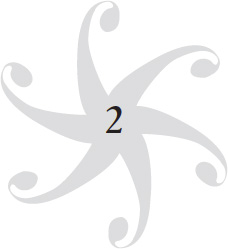
THE GLASS SPONGE
Towers
A sponge garden often begins just below the layers of water that sunlight penetrates well, especially in places where currents flow. There, as light falls away, you may find a landscape of motionless animal bodies. They have the appearence of cups, bulbs, grails, or branching trees. Sometimes they look like hands in thick mittens, as if something huge beneath the seafloor was trying to reach upward with soft, half-made limbs.
While in this shallow zone, look out and imagine a sea much colder, the scene now a blackness with a thin fall of particles from above. On the ocean floor, 3,000 feet below the surface, a pale tower, about a foot tall and cylindrical, sits in a cluster of other towers, each held fast at the bottom and a little broader, partly open, at the top. Within its soft exterior is a lattice of tiny hard parts. The smallest of these are stars, hooks, or slender crosses, with angles skewed to knit into that tower-like form. The towers are held to the seafloor by delicate anchors. The anchors and crosses are made of silicon dioxide, the main constituent of glass.
A sponge, on a temperate reef or a deep ocean moonscape, looks dead and inert, but if you look closely, it is not. It is a silent pump, drawing water through itself. As it does so, it senses and responds. The deep-sea tower, the glass sponge, has a body that also conducts light and charge, like an electric light bulb (“think!”) at the bottom of the sea.
Cell and Storm
The background to the evolution of the mind is life itself—not everything about life, not DNA and its workings, but other features. The start is the cell.
Early life, before animals and plants, was single-celled. Animals and plants are huge collaborations of cells. Before those collaborations arose, cells were probably not entirely solitary, but often lived in colonies and clumps. Still, a cell then was a tiny self of its own.
Cells are bounded, with an inside and outside. The border is a membrane; it partially seals the cell but has channels and ports embedded in it. A continual to-and-fro runs across that border, and inside is a frenzy of activity.
A cell is composed of matter, a collection of molecules. I don’t know exactly what comes into your head when I say “matter,” but the word often brings to mind an inert, ponderous way of being, with weighty objects needing to be pushed into motion. That picture of matter is guided by how things work on dry land and at the scale of midsize objects like tables and chairs. When we think of the material of a cell, we need to think differently.
Inside a cell, events occur on the nanoscale, the scale at which objects are measured in millionths of a millimeter, and the medium in which things happen is one of water. Matter in this environment behaves differently from anything in our midsize, dry-land world. At this scale, activity arises spontaneously, without having to be made to happen. In a phrase due to the biophysicist Peter Hoffmann, within any cell is a “molecular storm,” a ceaseless turmoil of collisions, attractions, and repulsions.
If we imagine a cell full of intricate apparatus, parts with jobs to do, these devices are continually being bombarded by water molecules. An object in a cell has a fast-moving water molecule collide with it about every ten trillionth of a second. That’s not a typo; the scale of events in a cell is almost impossible to think about in an intuitive way. Those collisions are not trivial; each has a force that dwarfs the forces those devices can themselves exert. What the apparatus inside a cell can do is nudge events in one direction rather than another, bringing some coherence to the storm.
The medium of water is important in maintaining this storm. Many objects at this spatial scale would stick together and seize up in a clump if they were out on dry land, but do not seize up in water; instead they’re kept in motion, and this makes the cell a realm of self-generated activity. We often think of “matter” as inactive and inert, I said. The problem cells have to deal with, though, is not getting things to happen, but creating order, instituting some rhyme and reason in the spontaneous flow of events. Matter, in these circumstances, does not sit there doing nothing, but risks doing too much; the problem is getting organization out of chaos.
Nearly all the associations we habitually bring to bear when we think about matter are misleading when we consider life and how it might arise. If life had to evolve on dry land out of table-and-chair-sized ingredients, it could not happen. But life did not have to do this; it evolved in water—perhaps in thin films of water on a surface, but in water—through the emergence of order in a molecular storm.
The origin of life occurred fairly early in the history of Earth, perhaps around 3.8 billion years ago, on a planet now about 4.5 billion years old. The first life may not have been cell-shaped, but there must have been some initial way for a special set of chemical processes to be contained, marked off, and prevented from diffusing away. Then at some stage there were cells, presumably leaky and tenuous at first, but eventually arriving at something like bacteria, cells that consistently maintain their organization and reproduce.




